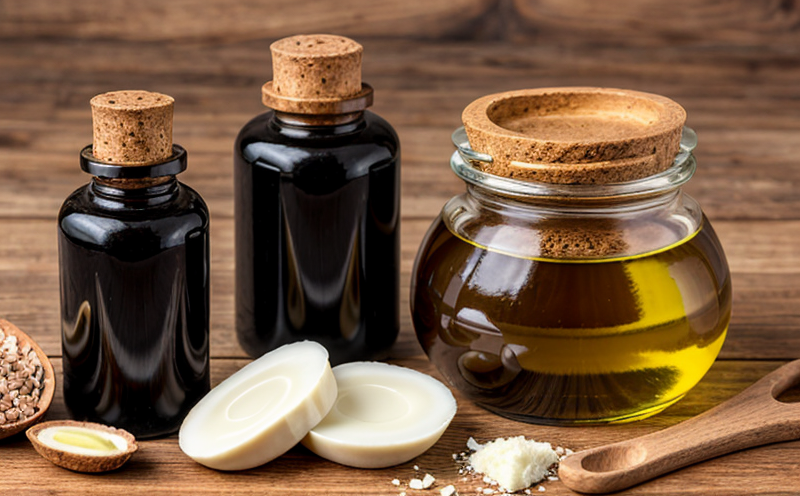AOAC 2012.13 Sterol Quantification in Oils
The AOAC 2012.13 method is a widely recognized and robust technique for quantifying sterols in oils, providing critical insights into the quality, safety, and authenticity of these products. This method specifically targets the determination of cholesterol and other sterols such as campesterol, sitosterol, and stigmasterol. Understanding sterol content is essential for several reasons:
Firstly, sterols are key indicators of oil freshness and oxidation levels. Oxidized oils can lead to the formation of harmful compounds that impact consumer health. By quantifying sterols, laboratories can assess the extent of oxidative degradation. Secondly, sterol profiles offer a fingerprint of the plant source from which the oil was derived, aiding in authenticity verification.
The AOAC 2012.13 method involves several steps: extraction, derivatization, and analysis using gas chromatography-mass spectrometry (GC-MS). The process begins with the careful selection of a representative sample. This is followed by thorough extraction, typically using an organic solvent like hexane or dichloromethane. Derivatization enhances detection sensitivity, allowing for more precise quantification.
After derivatization, the sample undergoes GC-MS analysis to identify and quantify sterols present in the oil. This step requires highly skilled personnel and state-of-the-art instrumentation to ensure accurate results. Reporting is comprehensive, detailing the sterol composition along with any deviations from expected values or standards. This information is crucial for quality control, ensuring that products meet regulatory and consumer expectations.
The AOAC 2012.13 method is not just limited to food safety but also plays a vital role in research and development (R&D). By quantifying sterols, researchers can explore the health benefits associated with specific types of oils. For procurement teams, this method ensures that they are sourcing high-quality raw materials, thereby maintaining product integrity throughout the supply chain.
The accuracy and precision of AOAC 2012.13 make it a cornerstone for compliance in food safety regulations. Regulatory bodies around the world rely on this method to ensure oils comply with standards set forth by international organizations like the Food and Agriculture Organization (FAO) and World Health Organization (WHO).
Compliance is paramount, especially given the increasing scrutiny of food products due to public health concerns. By adhering to AOAC 2012.13, laboratories can provide robust data that supports regulatory compliance and helps maintain consumer trust.
Why It Matters
The quantification of sterols in oils is critical for several reasons. Firstly, it aids in the assessment of oil freshness and quality by detecting oxidation levels. Oxidized oils can lead to the formation of harmful compounds that impact consumer health. Secondly, sterol profiles provide a unique fingerprint of the plant source from which the oil was derived, aiding in authenticity verification.
For regulatory compliance, quantifying sterols ensures that products meet strict standards set by international organizations like FAO and WHO. This is particularly important given the increasing scrutiny of food products due to public health concerns. By adhering to these standards, laboratories can provide robust data that supports regulatory compliance and helps maintain consumer trust.
Moreover, quantifying sterols in oils has significant implications for research and development (R&D). It allows researchers to explore the health benefits associated with specific types of oils. For procurement teams, this method ensures they are sourcing high-quality raw materials, thereby maintaining product integrity throughout the supply chain.
Applied Standards
| Standard | Description |
|---|---|
| AOAC 2012.13 | This method provides a comprehensive approach for the quantification of sterols in oils, including cholesterol and other specific sterols like campesterol, sitosterol, and stigmasterol. |
| ISO/IEC 17025 | The laboratory adheres to this international standard ensuring it meets the requirements for competence of testing and calibration laboratories. |
| FAO/WHO Food Safety Standards | These standards ensure that food safety practices are in line with global health guidelines, including the quantification of sterols in oils. |
Benefits
- Assures compliance with international food safety and quality standards.
- Provides insights into oil freshness and authenticity.
- Aids in the identification of harmful compounds resulting from oxidation.
- Supports research and development efforts to explore health benefits.
- Maintains product integrity throughout the supply chain.
- Ensures regulatory compliance, thereby protecting consumer trust.





